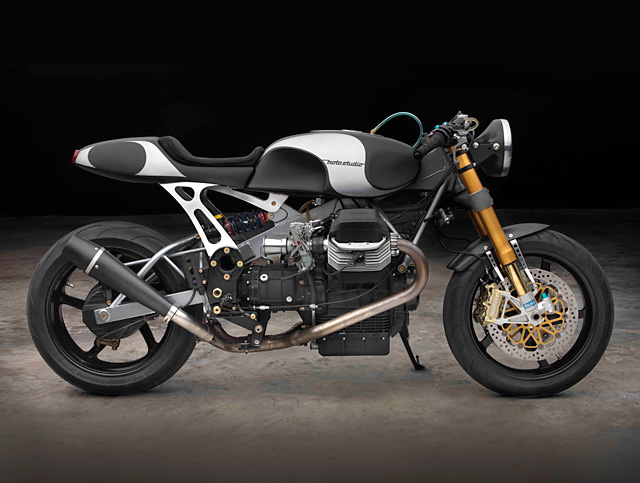
.
When Moto Guzzi released the 1995 1100 Sport the global press first fell in love with the idea of a true Guzzi sports bike and then just as quickly turned to frowns when it was announced the dry weight would be an obese 230kg. That sort of weight and “sport” just don’t fit, but some 20 years after its release experts of crafting Italian classics, Moto Studio of Miami Florida asked themselves a simple question. “How do you make a Moto Guzzi into a sport bike?” The answer is to shed as much weight as possible, increase horse power as much as one can while still running pump gas and dial in some serious suspension bits.
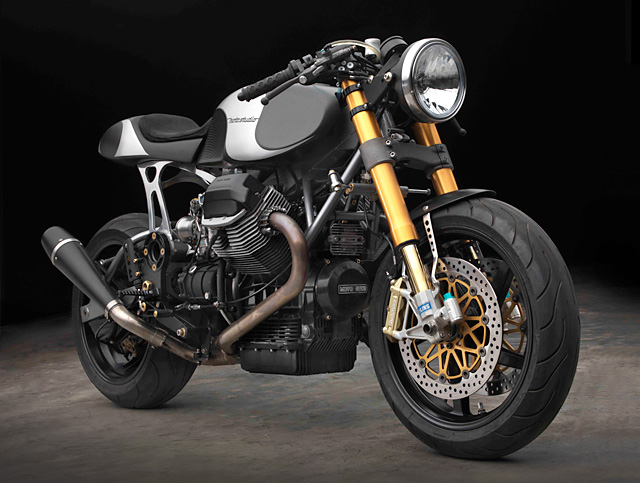
If you remember Moto Studio’s stunning Ducati 900SS, another gorgeous Italian Moto Studio put on a weight loss program, you’ll realise that Bruce and his team place a very large emphasis on making their bikes as light as is humanly possible. Just how serious is Bruce on this subject? Working with Comprent Composites in Atlanta the carbon fibre gas tank alone was two years in the making. The design took more hours than Bruce cares to remember but the result is a stunning piece of automotive artistry that drastically reduces the bike’s weight while adding an unmistakably speedy aesthetic. Never one to do things by halves the seat and tail section is also carbon fibre and meticulously designed and engineered.
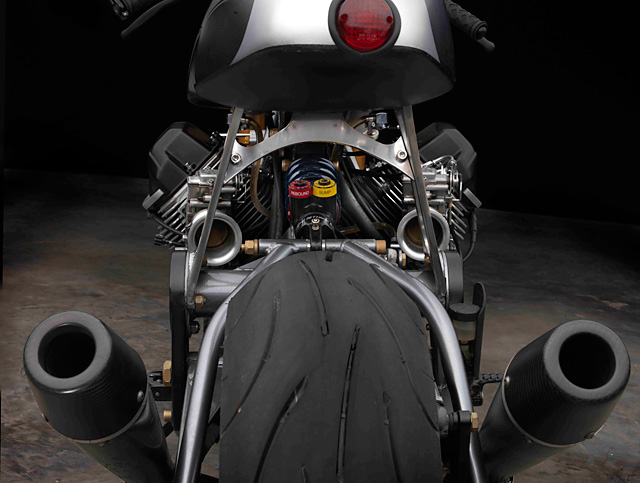
But you can’t simply build completely one-off pieces and expect them to bolt up, so the frame was modified to accept the tank in perfect symmetry, while the aluminium subframe was designed and built in-house at Moto Studio and just like the rest of the body work is simply stunning! With a relatively bare bike sitting in place Moto Studio used another one of their clever weight saving techniques, ripping out some 14 pounds of wiring harness, relays and gauges before crafting a light weight essentials only replacement and fitting a Motogadget dash. The single café style headlight and carbon front guard further reduce weight and give an even more sleek profile.
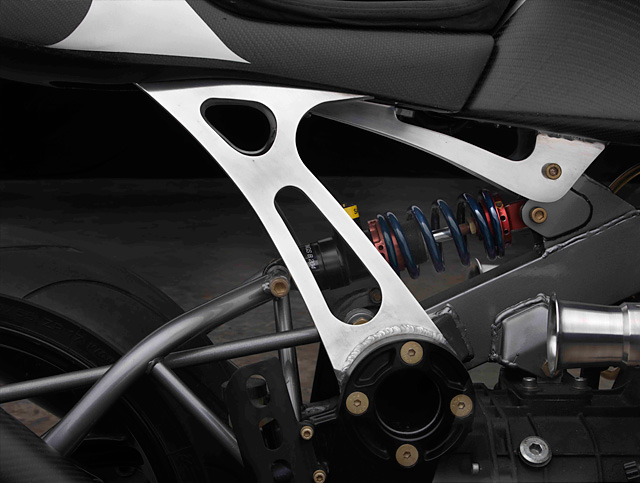
One aspect of the Guzzi the press loved at the time of its release and is synonymous with the brand is the longitudinally mounted V-Twin. In a bike with this much weight reduction you could be forgiven for fitting a nice pair of pipes and being done with it. But that’s just not how Moto Studio operates, so a full rethink of the engine was undertaken. The 1100 air-cooled power plant features twin plug heads and high-compression pistons from Mike Rich in Pennsylvania, as well as a Megacycle cam, titanium push rods, Falicon massaged crank all breathing through a set of Keihin FCR 41 carbs. The engine was built by Chris Birkle of Racing Sport Services. To make the now svelte Guzzi a little livelier a shorter ring and pinion was fitted by Charley Cole of Zydeco Racing.
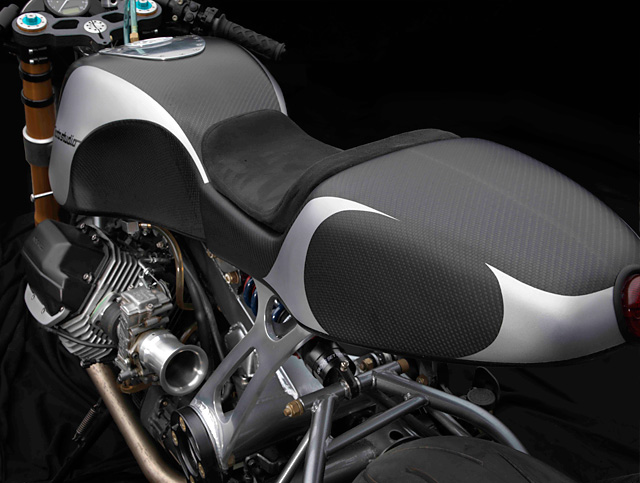
One of the great advantages of a greatly reduced overall weight is the ability to tune the suspension to provide both comfort and a precise feel befitting of a true sports bike. Of course you could rebuild the factory units and make minor tweaks, but did you really think Bruce would just take the easy road? No, instead Suspension duties are handled by a set of Ohlins R and T forks up front and a Sachs Formula Matrix twin tube damper, with high and low-speed compression and rebound at the rear. “All of this may seem completely unnecessary, however when you ride this bike, the final product is truly beyond the sum of its parts.” says Bruce.
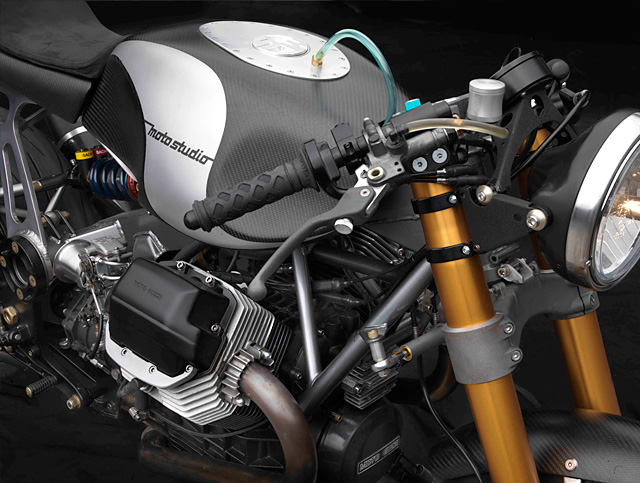
Once again Bruce and his team have taken a classic Italian from the 1990’s and brought it into the 21st century leaving no part of the bike untouched. Had Moto Guzzi really wanted to build the perfect sports bike this is the formula they would have followed, but then we wouldn’t have Moto Studio’s “High Roller” to gaze at in appreciation. And just how much weight was saved in the end with all the work put in? An astronomic 63kg. It’s a figure that would impress even the best of MotoGP teams, and once again we stand in awe of just how well Moto Studio can build a bike when they put their minds to it.
